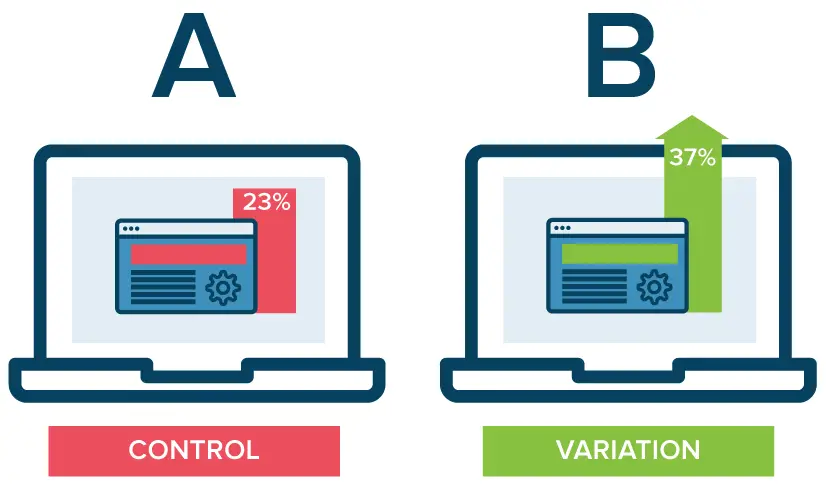A/B Testing Strategies That Drive PPC Performance
A/B testing, also known as split testing, is a crucial component of optimizing Pay-Per-Click (PPC) advertising campaigns. By systematically testing different variations of your ads, landing pages, and other elements, you can identify which changes lead to improved performance and higher conversion rates. In this comprehensive guide, we'll delve into the importance of A/B testing in PPC, explore effective strategies, and provide actionable tips to help you maximize the effectiveness of your campaigns.
Why A/B Testing Matters in PPC
A/B testing allows you to:
- Optimize Ad Performance: Test different ad variations to determine which ones resonate best with your target audience.
- Improve Conversion Rates: Identify elements that contribute to higher conversion rates, such as headlines, calls-to-action (CTAs), and ad copy.
- Reduce Costs: Refine your PPC strategy to lower cost-per-click (CPC) and cost-per-acquisition (CPA) by focusing on high-performing elements.
- Enhance User Experience: Create a better user experience by delivering more relevant ads and landing pages.
Key Elements to A/B Test in PPC Campaigns
1. Ad Copy and Creative Elements
- Headlines: Test different headline variations to determine which grabs attention and encourages clicks.
- Description Text: Experiment with different messaging, benefits, and CTAs to see which resonates best with your audience.
- Display URLs: Test different display URLs to understand their impact on click-through rates (CTR) and ad relevance.
2. Ad Extensions
- Sitelink Extensions: Test different sitelinks to direct users to specific pages on your website.
- Callout Extensions: Experiment with different benefits or features to highlight in your ads.
- Structured Snippets: Test different categories or types of information to provide additional context about your products or services.
3. Landing Pages
- Design/Layout: Test different layouts, designs, and visual elements to improve user engagement and navigation.
- Copy and Messaging: Experiment with different headlines, subheadings, and persuasive copy to see which converts better.
- Forms: Test the length and format of forms to optimize the conversion rate of lead generation campaigns.
4. Bidding Strategies
- Manual vs. Automated Bidding: Test different bidding strategies to determine which one yields the best results for your campaign goals.
- Bid Adjustments: Experiment with bid adjustments based on device, location, time of day, or audience segment to improve performance.
5. Targeting Options
- Audience Segmentation: Test different audience segments to understand which ones drive the highest engagement and conversions.
- Demographic Targeting: Experiment with targeting options such as age, gender, and income level to refine your audience targeting strategy.
Best Practices for A/B Testing in PPC
1. Set Clear Goals and Hypotheses
- Define specific goals for each A/B test, such as increasing CTR, improving conversion rates, or lowering CPA.
- Formulate hypotheses based on data, insights, and industry best practices to guide your testing strategy.
2. Test One Variable at a Time
- Focus on testing one variable (e.g., headline, CTA, landing page layout) per experiment to accurately measure its impact.
- Avoid making multiple changes simultaneously, as this can make it challenging to determine which change influenced the results.
3. Ensure Statistical Significance
- Gather a sufficient amount of data to achieve statistical significance before drawing conclusions from your A/B tests.
- Use statistical tools or calculators to determine if the results are statistically significant and not due to random chance.
4. Monitor and Analyze Results
- Regularly monitor the performance metrics of your A/B tests, such as CTR, conversion rate, and ROI.
- Analyze the data to understand which variations performed better and why, and apply these insights to future campaigns.
5. Implement Continuous Optimization
- Use the findings from successful A/B tests to continuously optimize your PPC campaigns.
- Iterate on winning variations and apply learnings to new tests to incrementally improve campaign performance over time.
Tools for A/B Testing in PPC
- Google Ads Experiments: Built-in feature for testing changes to your campaigns.
- Optimizely: Platform for A/B testing across digital experiences.
- Unbounce: Landing page builder with A/B testing capabilities.
- VWO: A/B testing and conversion optimization platform.
A/B testing is a powerful strategy for refining and optimizing your PPC campaigns to achieve maximum performance and ROI. By systematically testing different elements such as ad copy, landing pages, and bidding strategies, you can identify what resonates best with your audience and continuously improve campaign effectiveness. Implement the strategies and best practices outlined in this guide, adapt them to your specific goals and audience, and watch as your PPC efforts drive meaningful results and contribute to the growth and success of your business.






































